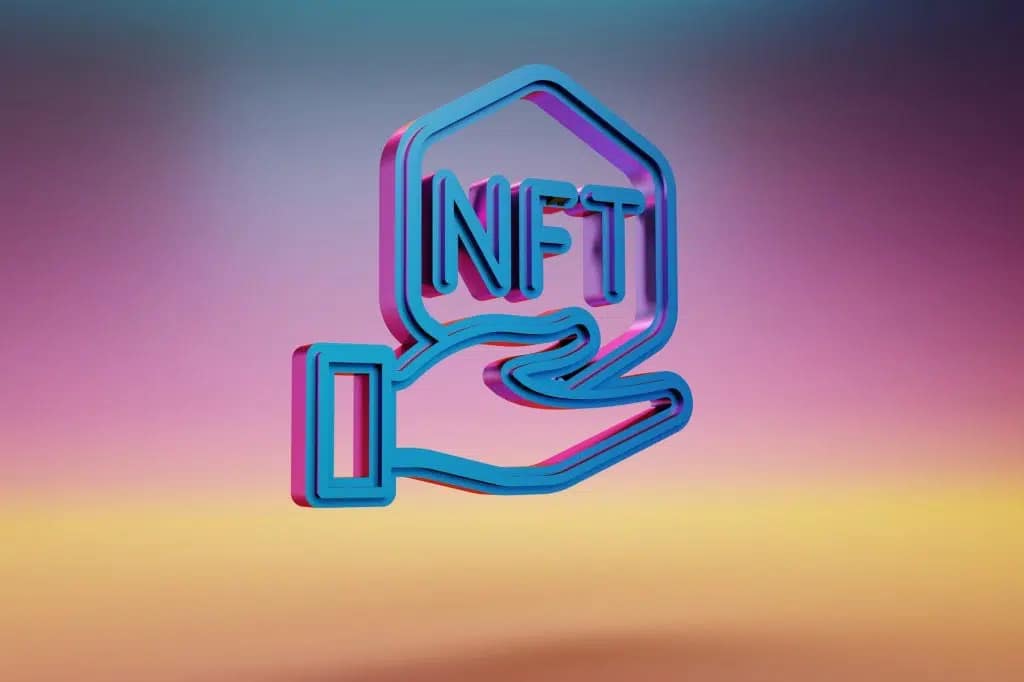Greetings and welcome to my extensive Ethereum Classic mining handbook. Within this informative piece, I shall meticulously guide you through the entire procedure, elucidating each step in a thorough manner. This journey will encompass the fundamental facets of ETC mining, while also offering insights on enhancing your mining configuration for peak productivity. So, prepare yourself with a steaming cup of coffee as we embark on an enthralling exploration into the captivating realm of Ethereum Classic mining.
Exploring Ethereum Classic: A Comprehensive Introduction
Ethereum Classic (ETC) is not just another cryptocurrency; it’s a revolutionary decentralized blockchain-based platform that empowers developers to create and launch smart contracts and decentralized applications (DApps). This open-source platform boasts a rich history and represents the original Ethereum blockchain, tracing its roots back to 2016. Let’s delve deeper into the fascinating world of Ethereum Classic, uncovering its origins, key features, and unique characteristics.
The Genesis of Ethereum Classic
Ethereum Classic’s inception is a captivating story rooted in the blockchain community’s commitment to decentralization and immutability. Here’s a closer look at the intriguing backstory:
- Ethereum’s Birth: Ethereum, as we know it today, began as a single unified blockchain. It aimed to revolutionize the digital landscape by offering a decentralized platform for executing smart contracts and DApps;
- The DAO Hack: In a significant turn of events, a hacker exploited vulnerabilities in the Decentralized Autonomous Organization (DAO) in 2016, making off with millions worth of Ether (ETH). This incident ignited a fierce debate within the Ethereum community;
- The Fork Dilemma: Faced with the choice of either accepting the theft or initiating a hard fork to reverse the transaction, Ethereum’s community was divided. The majority chose the latter, leading to the birth of Ethereum as we know it today;
- Ethereum Classic Emerges: However, a group of dedicated miners and blockchain purists believed that the fundamental principle of blockchain, immutability, should be upheld at all costs. They refused to support the fork and continued to mine the original Ethereum blockchain. This uncompromising stance gave rise to Ethereum Classic.
Key Features of Ethereum Classic
Now that we have a glimpse of its origins, let’s delve into the key features that set Ethereum Classic apart:
- Decentralization and Immutability: Ethereum Classic adheres to the core principles of blockchain, emphasizing decentralization and immutability. Transactions on its blockchain are irreversible, ensuring trust and security;
- Smart Contracts: ETC offers a robust platform for creating and executing smart contracts, enabling developers to automate various processes and transactions securely;
- Interoperability: Ethereum Classic is compatible with the Ethereum ecosystem, allowing for seamless interaction with other Ethereum-based tokens and DApps;
- Security: The Ethereum Classic network is secured by a dedicated group of miners who maintain the blockchain’s integrity through proof-of-work consensus;
- Community-Driven: ETC’s development is guided by a passionate community of developers, miners, and enthusiasts, fostering innovation and growth.
Why Choose Ethereum Classic?
If you’re wondering why Ethereum Classic might be the right choice for you, consider these compelling reasons:
- Commitment to Decentralization: Ethereum Classic’s unwavering commitment to decentralization makes it a reliable choice for those who value blockchain’s foundational principles;
- Immutable Transactions: Transactions on ETC’s blockchain are irreversible, ensuring that once something is recorded, it remains unchanged, enhancing trust and security;
- DApp Development: Developers can leverage Ethereum Classic’s platform to create DApps that are resistant to censorship, making it ideal for projects with strong privacy and security requirements;
- Interoperability: ETC’s compatibility with Ethereum paves the way for seamless integration with a wide range of existing Ethereum-based projects and services;
- Active Community: Ethereum Classic boasts a vibrant and passionate community that actively contributes to its development and growth, fostering a collaborative and innovative environment.
Exploring the Intricacies of Ethereum Classic (ETC) Mining
The Essence of ETC Mining:
Mining in the Ethereum Classic (ETC) ecosystem is a foundational activity, essential for maintaining the network’s robustness and efficiency. This process involves complex computational tasks where miners, equipped with advanced computers and specialized hardware, race to solve intricate mathematical puzzles. These puzzles are integral to the verification and incorporation of new transactions into the Ethereum Classic blockchain.
Key Components of ETC Mining:
- Specialized Hardware: Miners employ powerful computing resources, including ASICs and GPUs, to enhance their problem-solving capabilities;
- Problem Solving: The primary task is to decipher cryptographic challenges, a process that demands significant computational power;
- Block Addition: Successful problem-solving leads to the addition of a new block to the blockchain, a critical step in maintaining the chain’s continuity and integrity;
- Rewards System: The miner who first solves the puzzle and adds a block to the chain receives a predefined quantity of ETC as a reward. This incentive system is crucial for encouraging continued participation and contribution to the network’s stability.
Dual Objectives of Mining in Ethereum Classic:
- Securing the Network:
- Preventing Manipulation: Mining is instrumental in safeguarding the Ethereum Classic network against malicious interventions. The computational difficulty of solving the puzzles acts as a deterrent against fraudulent activities.
- Decentralized Control: The dispersed nature of mining activities ensures that no single entity can monopolize control over the network, thereby upholding its decentralized ethos.
- Facilitating ETC Distribution:
- Reward Mechanism: Mining serves as a vehicle for distributing new ETC coins into the ecosystem. By earning these rewards, miners are incentivized to persist in their efforts, thus bolstering the network’s security and vitality.
- Network Participation: The reward system fosters a vibrant community of miners who are motivated to continuously contribute to the network’s well-being.
Exploring Optimal Mining Hardware for Ethereum Classic
In the dynamic realm of Ethereum Classic mining, the significance of selecting the right hardware cannot be overstated. While the choices available are vast, understanding the intricacies of your options can make a monumental difference in your mining endeavors. Below, we delve into the world of Ethereum Classic mining hardware, providing you with comprehensive insights and recommendations.
1. GPU vs. CPU Mining: Harnessing Processing Power
When it comes to Ethereum Classic mining, the age-old battle between Graphics Processing Units (GPUs) and Central Processing Units (CPUs) is an essential factor to consider. Here, we emphasize the supremacy of GPUs due to their exceptional processing capabilities. NVIDIA and AMD GPUs are the frontrunners in this race, offering a stellar combination of power and efficiency.
Recommendation: Opt for GPU mining over CPU mining for Ethereum Classic, as it significantly enhances your mining performance.
2. Key Factors for Hardware Selection: Beyond GPU Brands
While selecting your hardware, it’s vital to go beyond brand loyalty. Several critical factors should influence your choice:
- Cost: Ensure your hardware investment aligns with your budget. The cost of GPUs and ASIC miners varies significantly, so consider your financial constraints;
- Power Consumption: Mining rigs are notorious for their voracious appetite for electricity. Choose hardware that strikes a balance between power efficiency and performance to keep operational costs in check;
- Performance: Evaluate the hash rate and overall performance of the hardware. Higher hash rates translate to more efficient mining.
3. GPU Choices for Ethereum Classic Mining:
Ethereum Classic mining enthusiasts often lean towards specific GPU models known for their reliability and performance. Two noteworthy contenders are:
- AMD Radeon RX Series: These GPUs, such as the RX 5700 XT and RX 580, have gained popularity for their hash rates and energy efficiency. They are well-suited for Ethereum Classic mining;
- NVIDIA GeForce GTX Series: The GTX 1660 Ti and GTX 1080 Ti from NVIDIA’s GeForce series are also commendable options. They boast excellent mining capabilities and have a dedicated following among miners;
- Recommendation: Explore the AMD Radeon RX series and NVIDIA GeForce GTX series for a reliable and efficient Ethereum Classic mining experience.
4. The ASIC Advantage: Unlocking Efficiency
For those seeking the pinnacle of efficiency in Ethereum Classic mining, Application-Specific Integrated Circuit (ASIC) miners shine brightly. These specialized machines are engineered solely for cryptocurrency mining and outperform GPUs in hash power.
- Benefits of ASIC Miners:
- Exceptional Hash Power: ASIC miners excel in delivering high hash rates, ensuring more efficient mining operations;
- Energy Efficiency: They consume less electricity compared to GPU rigs, reducing operational costs;
- Durability: ASIC miners are built to last, offering a longer lifespan than GPUs;
- Consideration: While ASIC miners provide unparalleled performance, they tend to be more expensive upfront. Assess your budget and long-term mining goals before opting for an ASIC miner.
Embarking on Your Ethereum Classic Mining Journey
Before you dive into the captivating world of Ethereum Classic mining, there’s a series of fundamental steps to ensure your success. In this comprehensive guide, we’ll walk you through each stage and provide valuable insights to make your mining venture rewarding and efficient.

Step 1: Acquire a Mining Rig
The cornerstone of your mining operation is the mining rig—a specialized computing system tailored for cryptocurrency mining. To get started, you have two primary options: constructing your own rig or investing in a pre-built one. Let’s explore each path in more detail:
Building Your Own Rig:
Creating your mining rig allows for greater customization and flexibility. Here’s a breakdown of the essential components you’ll need:
- Graphics Processing Unit (GPU): Select a powerful GPU with excellent hashing power for optimal performance;
- Motherboard: Ensure compatibility with your chosen GPU and other components;
- Power Supply Unit (PSU): Choose a PSU with sufficient wattage to power your rig reliably;
- Memory (RAM): Invest in enough RAM to support the mining software and operating system;
- Storage: Opt for an SSD or HDD to store the necessary mining software and blockchain data.
Purchasing a Pre-Built Rig:
While building your own rig provides customization benefits, pre-built rigs offer convenience and efficiency. Consider the following advantages of an ASIC (Application-Specific Integrated Circuit) mining rig:
- Efficiency: ASIC rigs are purpose-built for mining, making them more power-efficient and potentially providing a better return on investment (ROI);
- Ease of Use: Pre-built rigs often come ready to mine, saving you the time and effort of assembling and configuring individual components;
- Warranty and Support: Manufacturers typically offer warranties and customer support for their pre-built rigs, providing peace of mind.
Step 2: Acquiring Mining Software for Ethereum Classic
After assembling or acquiring a mining rig tailored for Ethereum Classic, the next crucial step involves selecting and installing the appropriate mining software. This software is the linchpin that allows your hardware to engage effectively in the mining process. A multitude of software choices are available, each with its unique features and compatibilities. Among the widely acclaimed options are:
- Claymore’s Dual Miner: Renowned for its dual-mining capability, allowing the simultaneous mining of Ethereum Classic and another cryptocurrency;
- PhoenixMiner: Favoured for its stability and efficiency, PhoenixMiner is known for its lower commission rates and extensive support for different mining pools;
- Ethminer: A straightforward, open-source option preferred for its dedication to Ethereum-based cryptocurrencies.
Installation Process and Tips:
- Command Line Interface (CLI) Usage: The installation process typically requires basic use of the command line interface on your computer. While this might sound daunting, it’s a straightforward process;
- Official Software Websites: Always refer to the official website of the chosen mining software for detailed installation guides. These guides usually offer step-by-step instructions tailored for various operating systems;
- Security Precautions: Ensure to download software from reputable sources to avoid security risks like malware. Always verify the authenticity of the downloaded files;
- Compatibility Check: Before installation, confirm the compatibility of the software with your mining rig’s hardware and operating system;
- Optimization: After installation, consider tuning the software settings to optimize performance and efficiency based on your hardware’s capabilities.
Step 3: Establish Your Ethereum Classic (ETC) Wallet
Now that you’re gearing up to venture into Ethereum Classic mining, it’s crucial to secure a reliable wallet for storing your hard-earned mining rewards. ETC wallets come in various flavors, each with its own unique characteristics and security features. Here’s a detailed look at the types of wallets available:
- Hardware Wallets:
- Maximum Security: Hardware wallets are renowned for their impeccable security. They store your ETC offline, making them impervious to online threats;
- Recommended: If security is your top priority, investing in a hardware wallet is a wise choice. Some popular options include Ledger and Trezor.
- Software Wallets:
- Convenience with Control: Software wallets, installed on your computer or mobile device, offer a balance between security and accessibility;
- Popular Choices: Consider using wallets like MetaMask, Trust Wallet, or Exodus for their user-friendly interfaces and features.
- Online Wallets:
- Ease of Use: Online wallets are web-based and accessible from any device with an internet connection. They offer convenience but may have slightly lower security compared to hardware wallets.
- Options to Explore: Coinbase and Atomic Wallet are well-known online wallet options.
- In addition to choosing your wallet type, you should also keep these wallet-related tips in mind:
- Backup Your Wallet: Always create a secure backup of your wallet’s private keys or seed phrases. Losing access to your wallet means losing your ETC;
- Enable Two-Factor Authentication (2FA): When available, enable 2FA for added security on your software and online wallets;
- Stay Informed: Regularly update your wallet software to ensure it is equipped with the latest security features.
Now, let’s move on to the next step in your Ethereum Classic mining journey.
Step 4: Select a Mining Pool
While the idea of going solo in Ethereum Classic mining might be appealing, the truth is that joining a mining pool typically yields more consistent and profitable results. Mining pools enable miners to combine their computational power, increasing their chances of earning rewards. Here’s what you need to know when choosing a mining pool:
- Pool Reputation:
- Research mining pools thoroughly. Opt for well-established ones with a good track record for reliability and fairness;
- Read reviews and forums to get insights from other miners about their experiences with specific pools.
- Mining Pool Fees:
- Different pools have varying fee structures. Some charge a percentage of your earnings, while others have fixed fees;
- Calculate the impact of these fees on your potential earnings, especially for smaller miners.
- Payment Methods:
- Check the payout methods offered by the pool. Some pools pay out in ETC, while others offer a variety of cryptocurrencies;
- Ensure the payout frequency aligns with your preferences, whether you prefer daily, weekly, or monthly payouts.
- Mining Pool Size:
- A larger pool may offer more consistent payouts, but the rewards are typically shared among more participants;
- Smaller pools may have less frequent payouts but may provide a higher share of the rewards to individual miners.
- Pool Features:
- Some mining pools offer additional features like merged mining or advanced statistics. Consider your preferences and skill level when evaluating these features.
Step 5: Setting Up and Tweaking Your Cryptocurrency Mining Software
After successfully joining a mining pool, the next critical step involves customizing your mining software to sync perfectly with the pool’s requirements and your personal mining goals. This customization process is pivotal for ensuring a smooth and effective mining experience. Here’s how to approach it:
- Identify and Enter Pool Details: Your first task is to input the pool’s address into your mining software. This is the gateway that connects your mining efforts to the broader network of the pool;
- Configure Wallet Address: You must provide your cryptocurrency wallet address. This is where your share of the mining rewards will be sent;
- Adjust Software Settings: Depending on your hardware and the specific cryptocurrency you’re mining, you might need to fine-tune settings like the mining algorithm, thread numbers, and intensity;
- Adhere to Pool Guidelines: Each mining pool has its unique set of rules and configurations. Ensure that you meticulously follow the pool’s instructions for optimal configuration;
- Security Measures: Implement robust security protocols to protect your setup from any potential cyber threats;
- Test and Validate: After configuration, run a test to ensure everything is functioning as intended. This step is crucial to avoid any potential loss of mining time due to misconfiguration.
Step 6: Monitoring and Enhancing Your Mining Performance
Once your mining operation is up and running, it’s not just a ‘set and forget’ situation. Active monitoring and continuous optimization are key to maintaining an efficient and profitable mining setup.
- Performance Monitoring: Regularly check your mining software for its performance metrics. Pay attention to the hash rate, which indicates how effectively your setup is mining;
- Temperature Control: High-performance mining generates significant heat. Monitor the temperature of your mining rig to prevent overheating, which can lead to hardware damage or reduced efficiency;
- Optimization Techniques: Depending on your observations, you might need to tweak your mining rig’s settings. This could include adjusting the mining software parameters or overclocking your GPU for better performance;
- Hardware Upgrades: Over time, consider upgrading your hardware components. Newer GPUs or ASICs can offer more power-efficient mining, increasing your profitability;
- Energy Efficiency: Balancing performance with energy consumption is crucial. Look for ways to reduce electricity usage without compromising on mining efficiency;
- Stay Informed: The cryptocurrency mining landscape is constantly evolving. Stay updated with the latest trends, software updates, and community recommendations to keep your mining operation at its peak.
By meticulously following these steps and continuously seeking ways to improve, miners can significantly enhance the productivity and profitability of their cryptocurrency mining endeavors. Also, dive into the exciting crypto slang with our guide on what ‘degen’ means in crypto. Unlock the secrets of this intriguing term today!
Conclusion
In conclusion, Ethereum Classic mining is a fascinating endeavor that can be both rewarding and enlightening. Throughout this comprehensive guide, we’ve covered the essentials of ETC mining and provided valuable tips to optimize your mining setup for maximum efficiency. As you continue your journey in the world of Ethereum Classic mining, remember to stay updated with the latest developments in this dynamic field. Your dedication and knowledge will undoubtedly contribute to your success in this exciting venture. Happy mining, and may your efforts yield bountiful rewards in the world of Ethereum Classic!



